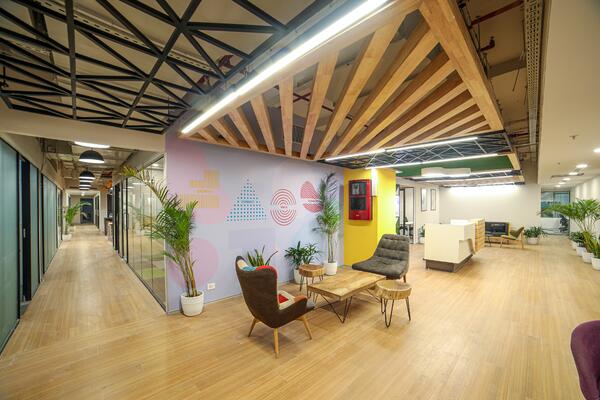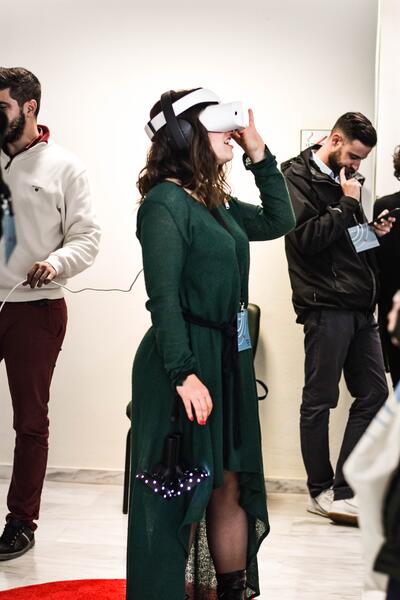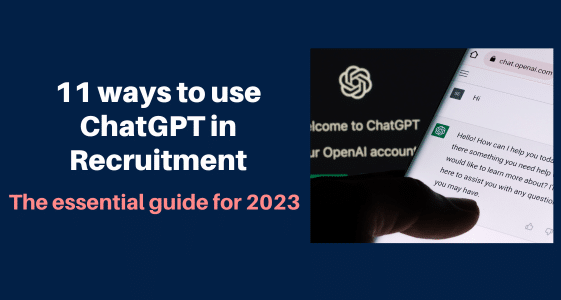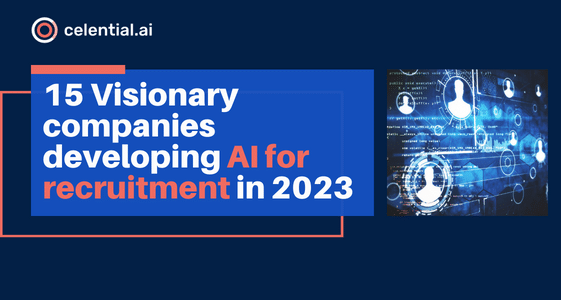As we cross the halfway mark into 2022, things cannot be more uncertain. Rapid inflation, a pandemic that we still haven’t overcome, and an international conflict plague the headlines. To make matters worse, many CEOs predict the U.S is barreling toward another recession.
Unfortunately, many HR departments are the first ones to experience these economic shocks as their budgets are cut and hiring freezes are put in place. In other scenarios, engineering hiring goalposts still remain firmly in place even as they reduce Talent Acquisition staff (as was the case with the recent Netflix layoffs).
Recruiting teams as a whole face a number of challenges whether they are part of agencies or in-house…but not all hope is lost.
If companies weathered the storm of 2020 they certainly can get through the recruiting challenges 2022. We created this article to address the current recruitment challenges many TA teams are facing and provide practical solutions to maintain growth in the face of dramatic circumstances.
5 Recruiting challenges for 2022
Below you will find the most pressing issues that are facing TA teams as we cross the halfway mark into 2022.
1. Uncertain markets and tighter budgets
Problem: Sometimes we would all like to turn off the news and just move to Bali where we could forget about the world’s problems.
The reality is that the majority of recruiters got kids to feed, mortgages to pay, and positions that need to be filled. So, they are forced to deal with the cost-cutting initiatives of many companies in response to the changing economic climate.
Recruiters must continue their jobs in a talent shortage with fewer resources and smaller teams.
How can they do this in a job market where candidate experience is at a premium and the most compelling job offer with the best benefits wins?

Solution #1: Rethink your recruiting budget
The pressure to do more with less will continue throughout the year but that doesn’t mean you can’t get creative. AI adoption has accelerated in the last few years with McKinsey revealing in their 2021 State of AI report that 56% of all Companies surveyed use artificial intelligence in at least one business function.
Gartner predicts that by the end of 2022, 30% of all U.S companies will use AI in their hiring and recruiting functions.

Whether they be AI sourcers or interview assessments, having a solution that can you can turn up when your company is growing or turn down when the economy slows is critical for adapting to an uncertain marketplace and fluctuating hiring needs.
Hiring a new sourcer or recruiter is out of the question in a recession and agencies aren’t cost-effective in the long term when you have to pay a percentage of the salary for every new hire.
By choosing a solution that scales with your engineering goals you can save money on your overall recruitment process and still find qualified candidates.
One, in particular, is Celential’s Virtual Recruiter, which uses an AI talent graph of 15 million+ software engineers to source candidates from Full-Stack to DevOps positions.
Companies that use Celential’s AI technology report 50% savings on their average Talent Acquisition costs.
2. The battle between remote work, return to the office, and hybrid
Problem: Companies that implemented a fully remote or work from anywhere policy (like Airbnb), are now forcing employees to adopt a strict hybrid model (like Apple and Google), or want everyone back at their desks (like Goldman Sachs).
This is creating an inevitable dilemma for many CEOs and executives who prefer to have their employees milling around the water cooler at least some of the week — in contrast to many employees, who are searching for fully-remote options.
Hybrid can sometimes be the worst of both worlds if not thoughtfully implemented — retaining both the isolation of remote work and the traditional power structures of the office (such as an equation of “Being Seen” with effective working).
Inequities can be created between your in-office team and your distributed team members, and video calls become even more difficult with 5 people in the same room while the rest are remote.
Even worse is when there is no clear policy on whether fully remote is allowed or if being in the office is encouraged.

“Despite remote work being one of the most prevalent requests I have seen from engineering candidates, I’ve still seen some companies offering little to no clarity as to what their roadmap is regarding work arrangements. They say things like ‘we are remote for now,’ but this in no way makes candidates feel closed or comfortable and they gravitate to an offer that is more concrete.”
— Derek D., Senior Customer Success Manager @ Celential.ai
Solution #1: Listen to your employees and design around their preferences.
Establish systems that enable remote work and have your company stick to them to create an equal employee experience.
Employee opinions on the topic have been closely monitored since the beginning of the pandemic and the jury is out.
- A survey by Slack of 9,000 workers in six countries found that 72% prefer a hybrid model with only 12% preferring to always work in an office setting. 13% would like to always work from home if given the choice.
- Tech professionals, in particular, prefer to stay remote with 76% of software engineers happy to work fully remote 60% of the time or more.
By surveying your employees before re-opening offices or gauging current employee sentiment about your hybrid setup, you will have a clear idea of their preferences.
The next step is to then act and create a formal policy tailored to their requests so there is no confusion for job seekers or current employees.
Then create rules such as having in-office employees take video calls from separate locations when they are speaking with remote team members and quarterly remote training sessions for managers.
The benefits of remote work are obvious: from opening your sourcing beyond your local office radius or time zone to creating a clear perk to highlight when closing top talent.

Karishma Patel Buford, Chief People Officer at OppFi, puts it bluntly: “If you don’t offer remote work, you’re not going to be able to attract talent.”
Fran Maxwell, Managing Director at consulting firm Protiviti, recommends refocusing on ways to increase offer acceptance and retention rates through the employee experience — higher comp alongside flexible work arrangements and other perks. “Organizations that will win the talent war will focus on [creating a unique and attractive] employee experience,” Maxwell said.
3. Creating an employer brand that differentiates from the competition
Problem: We are at a pivotal moment in the job market where leaders must steer their companies through rough waters while still attracting and retaining talent.
According to LinkedIn, a strong employer brand translates to 43% cost savings when hiring. With a new generation entering the workforce, and increased demand for corporate transparency and accountability in 2022, employer branding is a worthy investment of time to double down on.
Most importantly, companies have to decide how they present themselves to the world and what values they want to focus on.
- Will it be a push for diversity or a fully remote model?
- Is giving back to the community or professional development a prominent feature on their website?
- Will they double down on returning to a sense of “normal” with new office leases and floor plans?
It is incredibly important that there is a clear message from the top-down on how the company wants to portray itself because this is what recruiters will be using in their outreach and conversations with top talent. It will also be a critical element in the types of people that want to work for them.

Solution #1: Be proactive in your employer branding strategy
According to LinkedIn, 75% of job seekers consider an employer’s brand before even applying for a job. A company without clearly defined values is a giant red flag for potential candidates.
There should always be an engaging story about your company at least somewhere on your website. That could be its own native career site, blog, or “about us” page but somewhere specifically to showcase a mission and a purpose.
Adding videos of meetups and pictures of your employees is even better. Make it clear to candidates that actual humans work here and it’s more than just some remote desk job where you punch in and punch out.
Recruiters can include these images, values, or messaging in their outreach and show that their company puts people first.
Now specifically is a great time to have your Talent Acquisition and marketing team go in and refresh any outdated messaging that was either pre-pandemic or written more than a year ago.
One keyword to include: Flexibility. There was an 83 percent increase in job posts mentioning flexibility in 2021 over 2019, according to LinkedIn.
Some things to include in your outreach and company culture page:
- Compelling perks and incentives
- Flexible hours or work arrangements
- Commitment to diversity hiring
- Generous PTO packages
- Attractive 401k plans
- Stock options
- “Work to live” not “live to work”
- “Giving back to the community” corporate social responsibility programs
- Company values
Solution #2: Appeal to Millennial and Gen Z job seekers
Millennials and Gen Z now make up close to 50% of the workforce — and just by 2025 Millenials are forecasted to make up 75% of the total working population.
They are also far more likely than older generations to prioritize employer branding. As a Gallup report put it, “Millennials are consumers of the workplace.
They shop around for the jobs that best align with their needs and life goals.” They are a flight risk for subpar employers — but an opportunity for any company that nails their branding and genuinely cares about its employees.

Startups will often lose on paper to bigger companies in a straight comparison of compensation packages, size, funding, and stability. However, with the rise of Millennial and Gen Z who prioritize work-life balance, flexible work options, corporate values, and DEI accountability over salary, this could change.
Companies who invest in their brand and back into their communities are successfully beating out the biggest, wealthiest names for the newest generations.
Featuring employer branding is crucial throughout the recruiting process. To effectively appeal to the “Tiktok generation”, you might consider featuring short videos and social media campaigns in your recruitment marketing strategy.
Making your application process mobile-friendly and communicating with candidates through text and email (rather than phone calls) will also appeal to Millennial and Gen Z candidates.
4. Retention in the face of the great resignation and tech talent shortage
Problem: With a year passing since the start of the Great Resignation, and another 4.5 million Americans quitting their jobs in March, companies across the board are struggling to retain talent even with a historically low unemployment rate (3.6%).
A new Pew Research Center study surveyed thousands of US employees to analyze the reasons why employees leave. According to the study, the top causes of employees leaving in today’s market are low pay (63%), a lack of opportunities for advancement (63%), and feeling disrespected at work (57%).
Turnover, as many know, can be problematic. The time and cost involved in recruiting and onboarding hires consumes budgets and progress slows on key product developments.

Every company must ask themselves as they brace for the next 6 months: what are the priority perks and benefits to keep so your employees when cutting costs? This is especially important with high rates of disengagement and burnout among tech workers.
Solution #1: Prioritize professional development for recruiting challenges 2022
To hire and retain, consider investing in the professional development of your HR and talent acquisition teams. Understaffed and underdeveloped organizations suffer from a decreased employee retention rate as well as an increased perception as “struggling” by potential candidates.
Some ideas:
- More opportunities for workshops or training sessions
- Putting new or less senior employees on calls for shadowing
- Department-wide refresher training for old and new members alike
- Building out a best practices document
Learn more about winning employee retention strategies here.
Sitting down with department heads and asking about pain points from the previous year can also generate ideas to better support your employees.
Solution #2: Remote with team building and company culture efforts
It’s easy to keep putting off team-building efforts with the idea that you can’t slow down on progress in a competitive environment — and when the company meetups you planned get canceled by COVID.
But with more hybrid options and more top talent preferring remote options, finding ways to bring the team together in a virtual space is more important than ever.
You may have to get creative, but there are plenty of great options.
- A few low-friction synchronous options might include a team dinner on video call, a wine or dessert tasting (distributed in advance)
- Icebreaker discussions to start a meeting.
- Picking out a movie, book, or another piece of media to watch or read on your own time and discuss in a dedicated Slack channel

Outside of events, there are other avenues to continue developing company culture and displaying your values virtually. Just remember that trying to shift your usual in-person activities online without adjustments may be more difficult than you think. As described in a Harvard Business Review piece on WFH culture:
“Organizations can send new and stronger signals by establishing more touch points — that is, reaching out to employees more often and being explicit about the purpose and meaning of doing so. An organization that wants to reinforce an agile, innovative culture, for example, might have regular events that prompt creative engagement, such as improv activities, and showcase collaboration tools that enable brainstorming and sketching.”
In other words, double down on your company values by increasing the number of your virtual interactions and being deliberate about the kinds of events and signals you’re reinforcing within your team.
5. Optimizing the talent acquisition and hiring process
Problem: Even in an uncertain environment with layoffs and hiring freezes, top talent still remains challenging to recruit, especially in new tech industries such as cloud computing and artificial intelligence.
IT executives identified the talent shortage as the biggest obstacle (64%) to emerging technologies. However, many companies are still taking weeks to hire — wasting time and resources, and losing out on top candidates to competitors who move quickly.
Solution #1: Become more flexible with Assessments
“Companies have to keep being more flexible, whether that’s on comp, reducing pipeline friction like technical screenings, or being willing to wrangle their engineering team together more often to interview candidates.”
— Leslie L., Director of Customer Success @ Celential.ai
As candidates receive more and more offers, smaller slip-ups or hitches in the hiring process will be magnified and compared against experiences at other companies. If you leave a candidate waiting for a response, fail to explain those delays, or otherwise disrespect their time with things like extensive take-home assignments, you’re not making a good case for yourself as an attractive employer.
Instead, look to smooth things out for the candidates rather than your hiring team — you need to make the case that your company is a good fit, and if you have to bend over backwards sometimes to prove it, then so be it: candidates will recognize your efforts and show their appreciation accordingly.

For example, pushing a take-home assignment later in the process or setting hard deadlines for responding to candidates quickly might slow down your internal processes to a degree. Getting used to that new routine will help ingrain it more quickly and reduce the friction within your team moving forward.
Plan accordingly and try to solidify some changes in your pipeline by the end of Q2 so you and your team can work on implementing those changes and turning them into habits.
“The fact that more and more companies want to work with us is a great sign for the market as a whole: it means companies are willing to invest the capital and time in finding talent. Yes, competition is higher, but I think in the equation for total talent that’s been unlocked because of remote work, it’s a net positive for anyone hiring if you’re willing to go the extra mile to attract the interest of key hires. If you can do that — identify that top talent, create a strong candidate experience for them, and sell yourself well as an employer — you’re putting yourself in a very strong position.” — Ilias B., Co-Founder & VP of Product @ Celential.ai
Solution #2: Automate your sourcing and outreach
One way to make your recruiters’ efforts go further is to automate the repetitive, manual elements of the recruiting process — whether finding, reaching out to, screening, scheduling, or tracking candidates — with AI.
With the average recruiter spending 14 hours per week on administrative tasks, eliminating this burden is low-hanging fruit. Recruiters can use the valuable time they save to focus on making meaningful human connections with candidates, engaging, nurturing, and closing many more than they otherwise would.
Job seekers today expect a speedy and seamless recruitment process, as well as frequent and quick updates. Recruiting automation can facilitate great candidate experience by granting transparency into feedback and next steps, prompting interviewers to provide timely feedback, and making scheduling quick and easy.
Nothing makes candidates unhappier than bad employer communication, with 80% of job seekers finding it a dealbreaker.
Tim Sackett, president of HRU technical resources, told SHRM of his success employing interview reminder automation to increase a client’s show rate from 30% to 90%. “Interviewees said that they showed up because they felt the company really wanted them. They didn’t know they were communicating with a bot,” said Sackett.
Wrapping up: Recruiting Challenges 2022
Heading into the second half of the year, the state of tech recruiting remains highly in flux. With concerns about an economic slowdown, record-setting inflation and VCs slowing down investing, 2022’s hiring market involves a lot of uncertainty for tech companies. Reports of hiring freezes and layoffs have intensified even as hiring rates and the labor market remain paradoxically strong in the wake of the Great Resignation and tech talent shortage.
However, we have no doubt that companies who embrace the hiring landscape’s new trends and realities and strategically employ new technologies to put candidate experience front and center will continue to excel.
Table of Contents
































